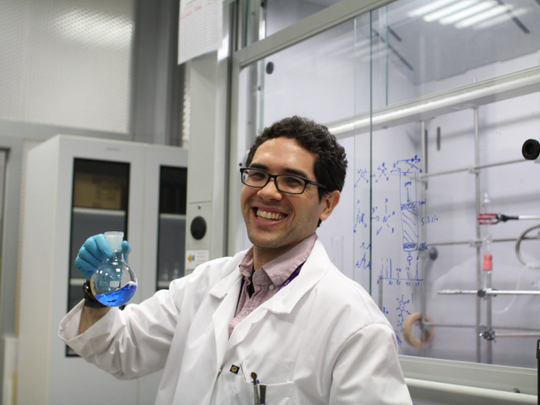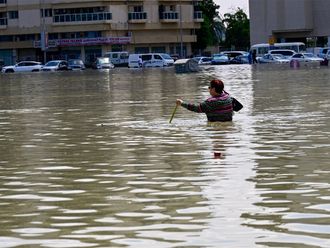
Abu Dhabi: In a pioneering research in solid-state chemistry, scientists at NYU Abu Dhabi have developed a smart crystal that can self-heal after breakage.
Speaking to XPRESS, Dr Patrick Commins, post-doctoral associate researcher at NYU said the two-year research showed the crystal can heal itself after breakage without any chemical or biological intervention by relying on its own molecular structure and physical contact to heal — similar to cuts on human skin.
“Our research throws light on the fact that there is more fluidity in a crystal that no one expected. Self-healing polymers has been researched by chemists for more than a decade and until now has only been observed in softer materials like rubber and plastic,” said Dr Commins.
Pale yellow crystals the size of a baby’s fingernail — and about 0.5mm thick were grown in the lab by Dr Commins, as part of the study conducted on dipyrazolethiuram disulphide crystals.
“Crystals found in nature are made from minerals, like calcium and silicates, but this crystal is different. “The crystal has been made specifically to have many close sulphur-sulphur bonds and they grow in rather small sizes,” said the researcher.
Dr Commins said his research was inspired by the relationship between sulphur atoms in soft polymers, which tend to flow toward neighbouring sulphur atoms and bond with them easily resulting in self-repair. He decided to test the same bond in crystals.
“What happens when we break the crystal is that we have all these sulphurs moving around and when we press them together they reform their bonds and they heal,” Dr Commins explained.
The single-compound crystal was broken using a machine built specifically to hold tiny objects and that has the capability to break the object cleanly. The two halves of the broken crystal were mechanically brought into contact with each other at room temperature. 24 hours later the crystal was whole again
The only defect was a superficial mark left behind by the crack in the middle. The percentage of healing was 6.7 per cent and was calculated by comparing the amount of force required to break the crystal before and after the healing process.
Dr Pance Naumov, NYU Abu Dhabi associate professor of chemistry and study co-author said the research is certainly is a shift in our understanding of crystals.
The scientists said they are planning to expand on the subject and will try to find other self-healing crystals.
Dr Hideyuki Hara, research scientist at Bruker in Japan, is also a co-author on the paper.













